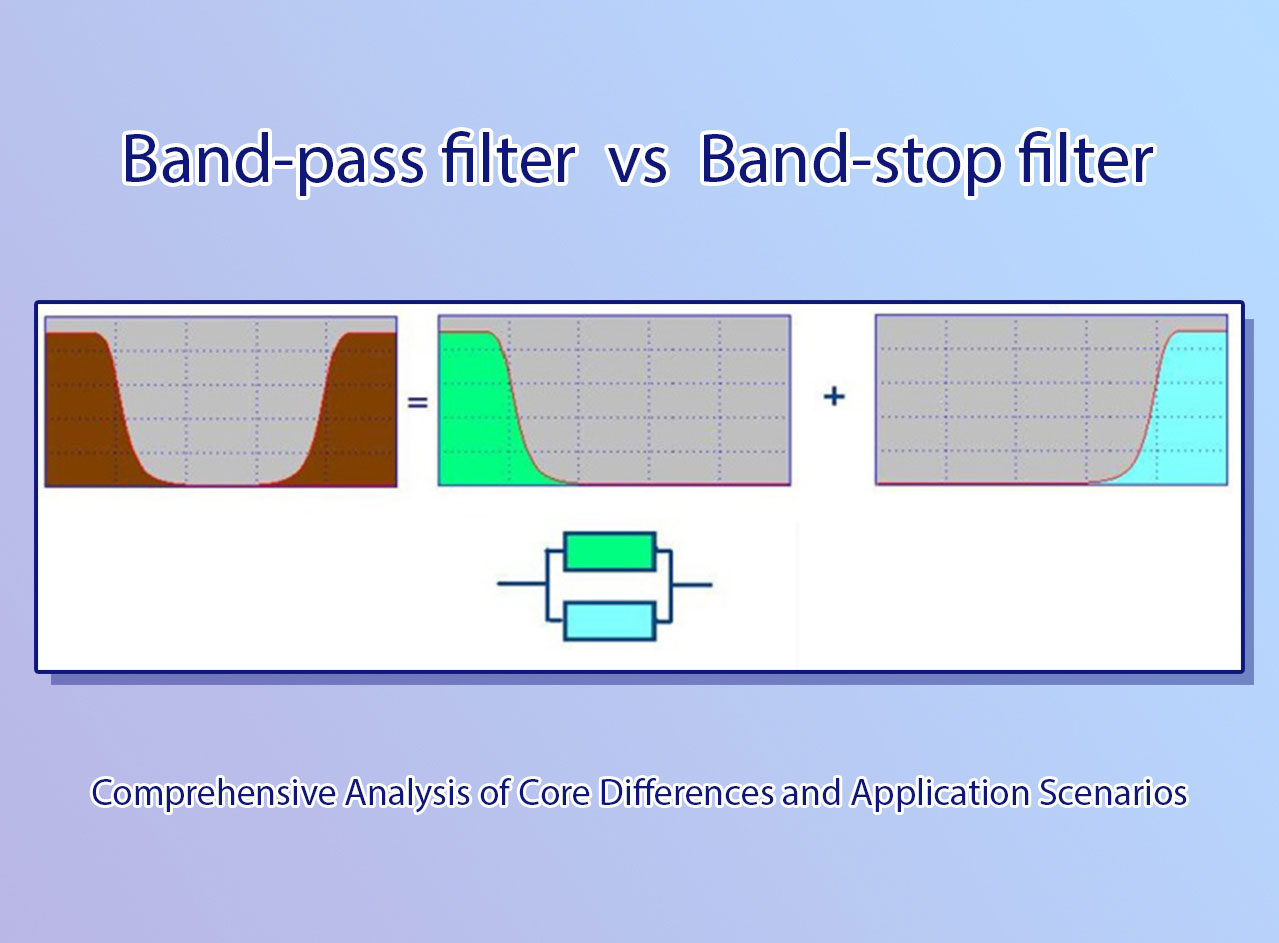-
 How to choose a high-quality base station antenna?
Mar , 01 2025
How to choose a high-quality base station antenna?
Mar , 01 2025
When selecting a high-quality base station antenna, several key factors need to be considered to ensure optimal performance and reliability. Here are some guidelines for making an informed choice: Antenna Type: Choose the appropriate antenna type based on the wireless environment and equipment requirements. For instance, in urban areas with dense base stations and small individual coverage areas, ...
View more
-
 Band Pass Filter vs. Band Stop Filter: Key Differences and Application Scenarios Explained
Mar , 12 2025
Band Pass Filter vs. Band Stop Filter: Key Differences and Application Scenarios Explained
Mar , 12 2025
1. Core Definitions and Working Principles : to pass while blocking low and high-frequency interference : Displays a "mountain peak" shape with maximum gain at the center frequency : Typically uses LC series resonant circuits or op-amp combinations Definitiontarget frequency band (stopband)Response CurveImplementation 2. Six Key Differences Comparison Table Comparison Aspect Band Stop Filter...
View more
-
 What is an RF Filter?
Apr , 18 2025
What is an RF Filter?
Apr , 18 2025
In high-frequency electronic systems like wireless communications, radar systems, and medical devices, RF filters (Radio Frequency Filters) act as "traffic controllers" for signals. These critical components precisely screen specific frequency ranges, ensuring optimal device performance. This article breaks down the core technology behind RF filters and addresses key selection criteria e...
View more
-
 How Do Filters Work?
Jul , 02 2025
How Do Filters Work?
Jul , 02 2025
What Is an RF Filter? An RF filter is a passive or active component that allows signals within a certain frequency range to pass while attenuating signals outside that range. Filters are essential in both transmit and receive chains to isolate specific frequencies and prevent crosstalk, interference, or signal distortion. Types of Filters by Frequency Selection Depending on the application, filter...
View more
-
 Typical Applications of Combiners in Macro Sites and Indoor DAS Systems
Aug , 27 2025
Typical Applications of Combiners in Macro Sites and Indoor DAS Systems
Aug , 27 2025
In modern mobile communication networks, especially during the deployment of 4G LTE and 5G NR, the number of frequency bands and systems continues to increase. To reduce the complexity of the antenna-feeder system and improve network deployment efficiency, the combiner has become an essential passive component in both macro base stations (macro sites) and Distributed Antenna Systems (DAS). Proper ...
View more
-
 Passive Component Bottlenecks and Solutions in Operator Networks
Sep , 03 2025
Passive Component Bottlenecks and Solutions in Operator Networks
Sep , 03 2025
In operator network deployment, passive components play a crucial role in ensuring stable and efficient RF signal transmission. With the rapid evolution of 5G, DAS (Distributed Antenna Systems), and private networks, the performance requirements for passive devices have become more stringent. However, components such as power splitters, couplers, and combiners often encounter performance bottlenec...
View more
-
 Core Differences Between RF Dual Band Combiner, RF Duplexer, and RF Diplexer
Sep , 08 2025
Core Differences Between RF Dual Band Combiner, RF Duplexer, and RF Diplexer
Sep , 08 2025
Understanding RF Passive Components: Core Differences Between RF Dual Band Combiner, RF Duplexer, and RF Diplexer In the complex ecosystem of radio frequency (RF) systems, RF passive components serve as the unsung heroes that enable seamless signal transmission, distribution, and management. Unlike active components (such as amplifiers or oscillators) that require external power to operate, passiv...
View more
-
 How Filters Improve Network Quality and Reduce Interference
Sep , 13 2025
How Filters Improve Network Quality and Reduce Interference
Sep , 13 2025
In modern communication networks, operators face a constant challenge: ensuring reliable, high-quality signal transmission while managing limited spectrum resources. With the rapid deployment of 4G and 5G networks, along with growing adoption of Distributed Antenna Systems (DAS) and indoor coverage solutions, RF passive components—particularly filters—have become essential tools for network optimi...
View more
 Band Pass Filter vs. Band Stop Filter: Key Differences and Application Scenarios Explained
Mar , 12 2025
Band Pass Filter vs. Band Stop Filter: Key Differences and Application Scenarios Explained
Mar , 12 2025